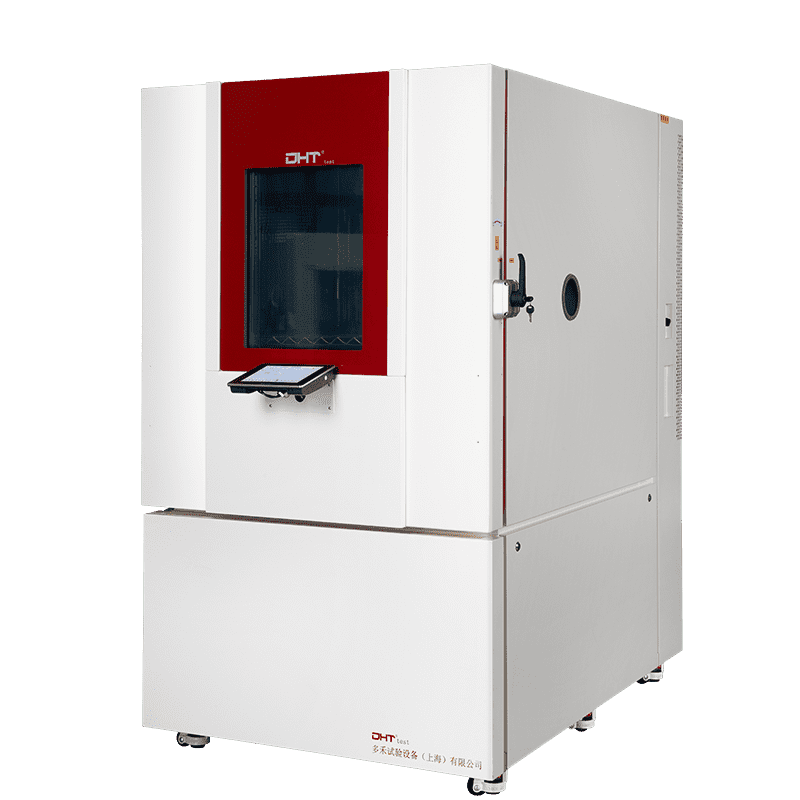Simulation Testing — Scientific Reproduction of Real-World Environments
- Typical test parameters include temperature, humidity, pressure, ultraviolet exposure, and other natural environmental factors.
- The objective is to ensure the product functions reliably within the expected environmental range and to prevent failures caused by environmental changes.
Stimulation Testing — Accelerated Screening of Latent Failures
- These tests commonly include sudden temperature changes, mechanical vibrations, electrical shocks, and other forms of stimuli.
- The goal is to uncover hidden faults that are unlikely to appear under normal use but may cause failures over time.
Differences and Complementarity Between Simulation and Stimulation Testing
| Dimension | Simulation | Stimulation |
| Testing Objective | Replicate real-world operating conditions to verify functionality and environmental robustness | Accelerate defect detection to ensure long-term durability |
| Application Stage | Design validation and early development phase | Production quality screening and lifespan prediction |
| Type of Stress | Environmental stresses (temperature, humidity, light exposure, etc.) | Combined stresses (thermal shocks, vibration, electrical surges, etc.) |
| Failure Mechanism | Detect insufficient environmental adaptability | Trigger latent defects leading to failure |
Three Typical Forms of Rapid Thermal Stress in Stimulation Testing
- Thermal Shock Test
- Core Feature: Extremely rapid temperature transitions; the fastest among the three.
- Temperature Change Rate: Typically greater than 30°C/min (air-to-air method) or greater than 60°C/min (liquid immersion), with stepwise temperature changes at the transition.
- Primary Objectives:
- Induce stress failures caused by mismatched coefficients of thermal expansion (CTE) between materials such as chips, substrates, solder, and encapsulants (e.g., solder joint cracking, delamination, package fractures).
- Assess material brittleness or degradation under severe temperature gradients.
- Typical Applications: Electronic components (ICs, resistors, capacitors), PCB assemblies, aerospace parts, military products, and automotive electronics.
- Rapid Temperature Change Test / Rapid Thermal Cycling
- Core Feature: Linear temperature cycling at a relatively fast rate, but transitions are gradual rather than abrupt.
- Temperature Change Rate: Generally between 5°C/min and 30°C/min (common standard rates include 10°C/min, 15°C/min). Transition time depends on temperature range and rate.
- Primary Objectives:
- Simulate rapid temperature changes experienced during actual use or transportation (e.g., day-night temperature shifts, device power cycling).
- Accelerate thermal fatigue failures such as solder joint cracking, connector contact degradation, and coating cracking.
- Screen process defects like cold solder joints or micro-cracks.
- Differences from Thermal Shock:
- Transitions are gradual and linear, not stepwise.
- Typically performed within a single chamber.
- Temperature differentials are usually smaller than thermal shock tests but can still be substantial.
- Focuses more on thermal fatigue and realistic environment simulation.
- Typical Applications: Complete products (servers, communication devices, automotive control units), large PCB assemblies, modules, and consumer electronics.
- Temperature Cycling Test / Thermal Cycling
- Core Feature: Slow temperature cycling with the lowest ramp rates among the three.
- Temperature Change Rate: Usually ≤ 5°C/min, with longer transition times.
- Primary Objectives:
- Simulate long-term, slow temperature cycles occurring over product lifespan (e.g., seasonal or day-night changes).
- Induce long-term thermal fatigue to assess reliability and predict lifespan of solder joints, BGAs, connectors, etc.
- Evaluate material stability under prolonged thermal stress.
The Crucial Role of Environmental Test Chambers in Simulation and Stimulation Testing
- In simulation testing, chambers such as temperature and humidity chambers, salt spray chambers, and UV aging chambers simulate the natural conditions products will face to verify environmental robustness.
- In stimulation testing, chambers like thermal shock chambers, rapid temperature cycling chambers, and combined environmental chambers impose rapid temperature changes and complex stressors to reveal latent failures and ensure long-term reliability.
Conclusion
- Simulation testing focuses on replicating real-world environments to validate product adaptability during the design phase;
- Stimulation testing applies more severe stresses to accelerate defect exposure and ensure durability.
FAQ
What is Simulation Testing?
Simulation testing involves artificially recreating the real-world conditions a product will face—such as temperature, humidity, pressure, and light exposure—to verify its performance and design robustness. This testing ensures the product can operate reliably within the expected environmental range and helps engineers identify any weaknesses in environmental adaptability.
What is Stimulation Testing, and how does it differ from Simulation Testing?
Stimulation testing applies stresses beyond normal operating conditions—like sudden temperature shifts, vibrations, or electrical shocks—to accelerate the exposure of hidden defects. Unlike simulation testing, which focuses on replicating real-world environments, stimulation testing aims to quickly uncover potential failures and ensure long-term product durability.
What role do environmental test chambers play in Simulation and Stimulation Testing?
Environmental test chambers are essential for conducting both simulation and stimulation tests. Chambers such as temperature and humidity chambers, salt spray chambers, and UV aging chambers simulate natural environmental conditions. Thermal shock chambers and rapid temperature cycling chambers apply combined stresses to accelerate fault detection. Choosing the right chamber and test protocols is key to improving testing accuracy and reliability.


